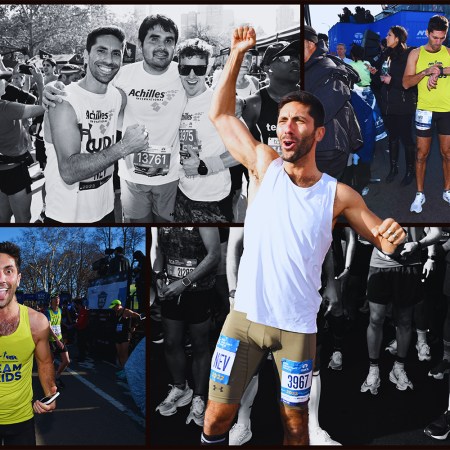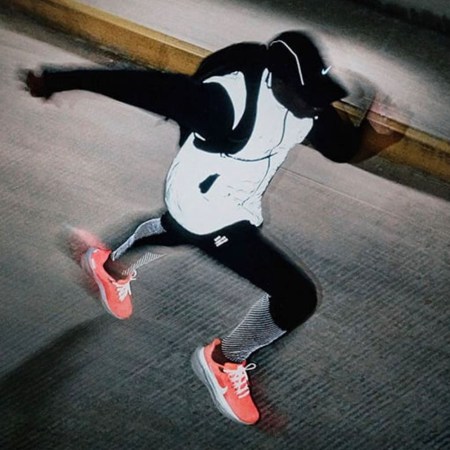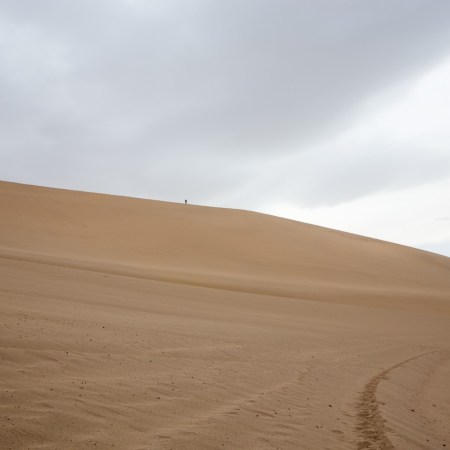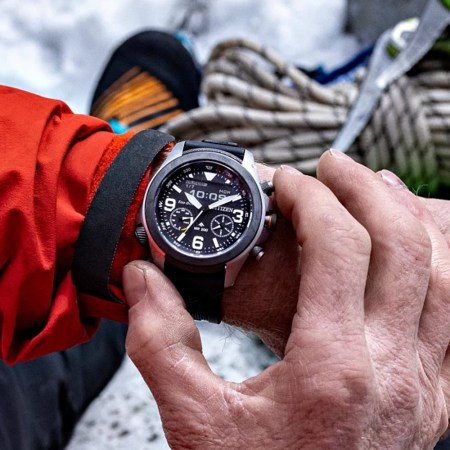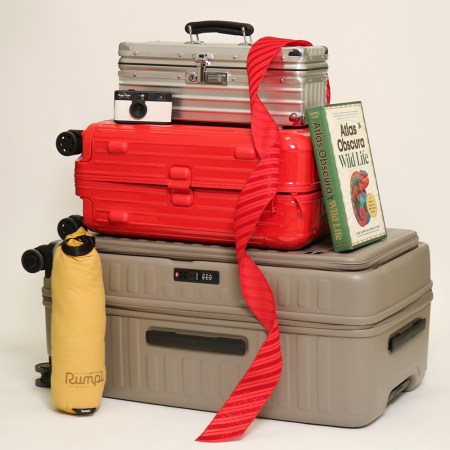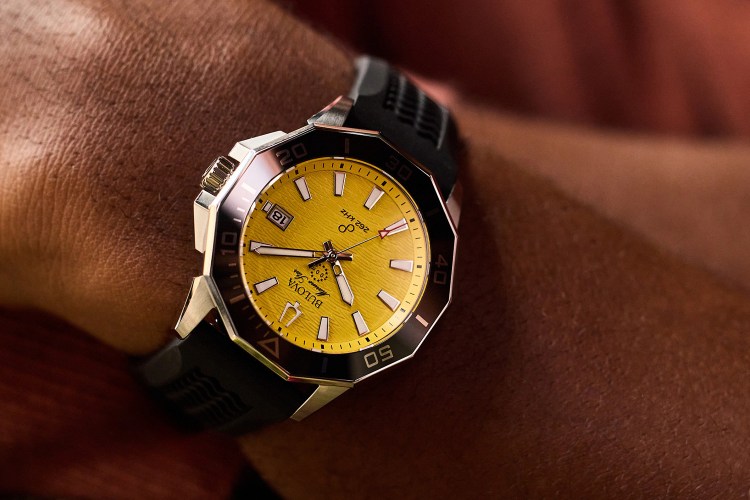When Fabia Bausch, founder and co-owner of Chem Chem Safari Lodge in the Tanzanian plains of East Africa, first suggested to the nearby Maasai tribe that the elite athletes could instruct visiting travelers on the finer points of long-distance running, she had some explaining to do.
“It took a little while to describe to the Maasai what we intended,” Bausch says. “They were already leading guided nature walks for our ‘slow safari’ guests, but we had visitors who were runners or joggers and knew the Maasai are lauded around the world for their great running abilities and endurance. They wanted to learn from those runners.”
The concept of merely running for recreation, competition or personal achievement sounded ridiculous to a veteran guide like Raposh, who killed his first lion at the age of 14.
Through an interpreter versed in Swahili, Raposh explains to me that his people run to hunt, to round up their herds of cattle, to chase down predators preying on those cows or to get messages between far-flung Maasai villages. And that’s all while carrying the iron spear a warrior is duty-bound to keep in his fist as long as he’s upright and in the bush. The concept of running when one doesn’t have to strikes him as silly.
“We run for purpose,” Raposh says. “Where my tribe lives is very remote. There are no vehicles to get from one point to another. If you’re traveling to the next village, you have to walk or run.”
Bausch describes these early proposals as a learning experience for both the former Swiss banker turned safari camp owner and the veteran warriors of a proud African tribe.
“The first few times the Maasai ran with guests, they couldn’t get around the concept,” Bausch explains. “It was a difference in cultures. They would ask, ‘Why? Why are you running? We’re running to what? What is the point?’”
The process of planning out the routes and distances between Bausch and Raposh was logistically necessary, but it reads like a sketch from The Gods Must Be Crazy.
“We run with them?”
“Yes.”
“To where?”
“To the end of the distance for that run.”
“What do we do when we’re there?”
“Nothing. You come back.”
“We go there just to come back?”
“Yes…”
There’s little doubt Raposh went back to his quiet village that night and told his fellow warriors of the ridiculous things travelers do, but both sides eventually worked out an understanding. Now, he enjoys leading the individualized group runs for guests, tailoring them in intensity and distance.
“We have to work out details in advance,” Bausch adds. “That’s because, if you don’t say when to stop, the Maasai will just keep going.”

Lessons From the Maasai
The running program is just one option for travelers who come to Chem Chem Lodge for the slow safari experience. Created by Bausch and co-founder and Nicolas Negre, the lodge environment — combined with the smaller, forward safari camp of nearby Little Chem Chem — allows for a more leisurely, tailored journey. While traditional safaris push the pace of experiencing wildlife and set a less compromising itinerary, Chem Chem and slow safari let the guest choose activities and live amongst the plains and the biodiversity with a more peaceful mindset.
When a guest wants to leave the Land Cruisers behind for a while to set out into the bush on foot, Raposh or one of his fellow warriors step in to guide a daily run along the safer paths. While the Maasai will work with an individual runner or a small group, any traveler must prepare for a robust challenge.
“What I do is pay attention to a guest’s pace,” Raposh explains. “If they run a little more slowly, for the first day I will go with that pace. On the second day, I will talk to the guest and we will plan to increase the pace. From there, we will continue to increase the pace until the guest is running better.”
Raposh is quick to add that Western runners need to vary their training as it’s not necessary to run every day to improve strength and conditioning. His people’s lifestyle naturally builds in long walks and hikes by necessity, all of which improves their overall running ability. He urges his students to do the same.
In addition to outlining physical improvements and instructing guests on pace increases, Raposh and his tribesmen instruct students on diet and natural homeopathy. He credits the Maasai’s running ability to their natural, more plant-based diet, which lowers cholesterol and maintains cardiovascular strength.

They Start Young
Along the way, Raposh stresses the importance for a runner of starting to train early in life.
“When we are young, we will lead out the livestock, even as little as five years old,” he adds. “I started with the calves at that age. As we get a little older, we might head out a little farther and farther, all as we grow up older. So, we have to get better [at running] naturally.”
He also credits the realities of East African life for creating great runners. Conditions in Tanzania and Kenya can be extreme because of the summer heat, the intense rainy season, and the natural terrain of valleys and plateaus. He encourages visiting runners to consider altering their routes and terrain once they return home.
Beyond gathering the wisdom of the Maasai on training and nutrition, a guided run at Chem Chem offers the rarest of opportunities to trot past Africa’s Big Five and a myriad of other beautiful creatures. A single journey on foot can bring travelers closer to elephants, wildebeest, Thomson’s gazelles, cape buffalo, zebras, impalas, giraffes, baboons and countless other creatures, but they would need to hash out with the Maasai ahead of time whether the plan is to stop the run occasionally to take in such sights.

A Momento for the Maasai
Still, with all of this in mind, what could Raposh teach a writer in one short visit? As the interview wrapped up, the sun prepared to set and reveal the Southern Cross over the Serengeti. With martial arts-damaged knees that have seen nine surgical procedures over the years, this reporter could not safely weather the challenges of a Maasai run. Plus, the ever-faithful, indestructible Red Wing Heritage Eight-Inch Classic Moc boots that accompany me on every wildlife journey to keep out the snakes and driver ants don’t lend themselves easily to jogging.
Instead of sharing the finer points of putting one foot in front of the other, Raposh hefted his heavy spear and offered to teach me proper throwing technique. In return, I promised to fetch a lonely golf club found at the camp and introduce the 500-year-old Scottish game to the Maasai. Suffice to say, chipping the little white ball came easier to the tribe than hurling the weapon did to me.
Still, three practice tosses later, with Raposh demonstrating the concept of arcing the throw and trusting the weapon’s perfect weighted balance to deliver the point, I managed to stick it into the ground 20 yards away with a bit of accuracy — though I trust the beasts of Tanzania are safe from my right arm indefinitely.
As for Raposh, as far as I know, he might’ve taken the golf club and Titleist back to his village. Maybe the Maasai will one day take over golf the same way they mastered the art of running.
Whether you’re looking to get into shape, or just get out of a funk, The Charge has got you covered. Sign up for our new wellness newsletter today.


